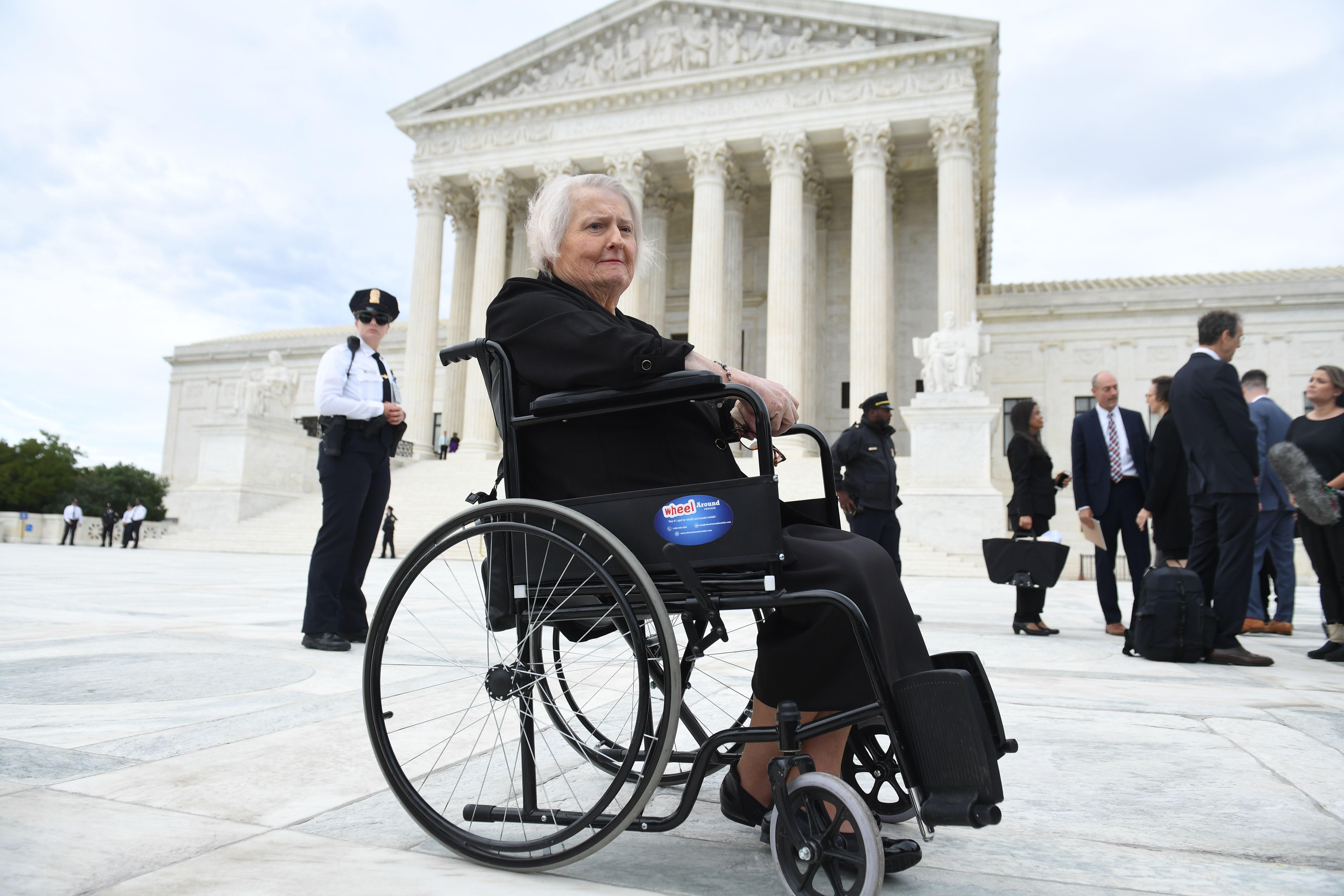On Monday, in a landmark 6–3 ruling, the Supreme Court decided that Title VII of the Civil Rights Act, which bars employers from discriminating on the basis of sex, prohibits discrimination on the basis of transgender status. In the case, Bostock v. Clayton County, Aimee Stephens, a transgender woman who was assigned as male at birth, was fired from her job after announcing to her employer that she would begin to live her life openly as a woman. The court held that such a termination for being transgender is unlawful sex discrimination.
While the decision has already been widely celebrated as a huge step forward for transgender rights, as I have argued, such a victory is also a critically important decision for women’s rights. That Bostock should be celebrated as a win for women’s rights will be challenged in some quarters, which have sought to claim that the interests of women and those of transgender women are at odds. (For examples of this mindset, see here, here, and, more recently, J.K. Rowling’s comments that “trans activism” is harming women.)
One of the more central concerns of these critics is that by conforming to feminine stereotypes, transgender women like Aimee Stephens or Caitlyn Jenner reinforce regressive ideas of what it means to be a woman that have long been recognized to hold women back. Even one of the lower court decisions in Stephens’ case wondered how she could be fighting sex stereotypes by seeking the right “to dress in a stereotypically feminine manner.”
In light of this, it will not be surprising to see analysis arguing that the Bostock decision undermines women’s rights or risks harm for women. Bostock, however, actually illuminates how transgender rights and women’s rights are aligned. This is because transgender women like Stephens, even when adopting traditionally feminine appearances or behaviors, fight stereotypes harmful to all women.
Bostock shows us how. Stephens’ employer objected not only to the idea that someone could change her sex presentation, but also complained that Stephens was too masculine to be a woman. Her boss stated that “a woman should look like a woman.” And even though he had never seen Stephens present herself as a woman, he believed he knew she was too manly to be a woman: “I’ve yet to see a man dressed up as a woman that I didn’t know was not a man dressed up as a woman.” In other words, a person born a boy could never be a girl because girls must be feminine and boys are not.
We can find a similar motive in other cases of discrimination against transgender women. In another important case before a lower court, a transgender woman had an extensive military background and her employer was puzzled by the notion that someone could “go through the experience of Special Forces” and “decide that he wants to become a woman.” In other words, the employer discriminated partly on the basis that a transgender woman wanting to engage in stereotypically masculine endeavors made her “un-womanlike.” It’s easy to see how this stereotyping hurts all women.
We can see this too in the opposition to Caitlyn Jenner, who has been a prime target of concerns about reinforcing sex stereotypes. Some of the resistance to Jenner’s presenting as a woman was due to the fact that Jenner, an Olympic champion, was the literal embodiment of classic masculine virtues of strength and athleticism. It was hard for some to accept that such a manly man could be a woman.
All told, discrimination on the basis of being transgender is not just then about objecting to the idea of changing one’s sex but about what types of appearances and behaviors are acceptable for a woman.
This idea that women must be feminine not only holds back transgender women at work, but all women. As decades of research shows, women who adopt masculine traits to succeed at work face backlash for doing so. Even when it comes to traits like authoritativeness that might be necessary to get ahead, women are penalized for displaying them. Assertive women are often considered less hireable and less likable because they are seen to betray gender expectations.
The stereotypes that often limit transgender women at work are thus the very same ones that often limit women at work more generally. A win in Bostock prohibiting employers’ reliance on these stereotypes is then not only a win for transgender rights but also a win for women’s place in the workplace.
It’s further worth noting that this victory for transgender rights is a broader victory against sex stereotypes in a way that’s a win for men, too. The idea at the root of the discrimination against Stephens—that a person assigned male at birth is necessarily too masculine to be considered a woman—also assumes that men must be masculine. And men at work also face bias when they adopt feminine behavior, even by expressing vulnerability or simply asking for family leave. So, the rule in Bostock barring employers from discriminating against transgender women also helps to fight sex stereotypes that can limit everyone at work.
The connection between transgender rights and women’s rights in Bostock could easily be missed given that the court relied on formal logic to decide the question, rather than anything about how the case relates to sex discrimination in the workplace more broadly. Perhaps a narrow decision was necessary to get two conservative justices to sign on to the opinion. But it is crucial to surface the connection to sex discrimination more broadly. This moment has shown us the possibility for unprecedented racial solidarity. Monday’s ruling offers hope that it can also be a moment for gender solidarity as well.
